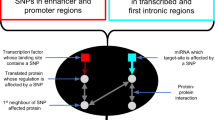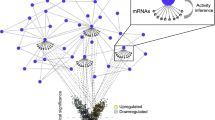Abstract
Discs large homolog 5 (DLG5), a member of the membrane-associated guanylate kinase (MAGUK) family of scaffolding proteins, has been associated with Crohn’s disease (CD), but its role in the pathogenesis of this inflammatory bowel disease is disputed. Here, we used sequence comparisons and phylogenies to analyse the DLG5 gene and its protein product. We identified a 5′ exon, which codes for an N-terminal caspase recruitment domain (CARD) and experimentally confirmed its expression in colonic tissue. DLG5 shares this new domain with nucleotide-binding oligomerisation domain containing 2 (NOD2); the first CD susceptibility factor identified in genetic studies. An extensive phylogenetic analysis redefines the family organisation of the MAGUK proteins: DLG5 is closely related to CARD10, CARD11 and CARD14, CARD-containing proteins which initiate pro-inflammatory NFκB signalling, but not to DLG1–4, previously considered the closest related proteins. Therefore, we suggest renaming DLG5 to correctly annotate the gene in its phylogenetic and functional context. Our study provides evidence that the scaffolding protein DLG5 belongs to the CARD protein family. Thus, DLG5 likely acts in the regulation of NFkB activation or caspase activation as part of host defence mechanisms. As there is substantial crosstalk between CARD-mediated pathways, both CD susceptibility genes, NOD2 and DLG5, may interact functionally to contribute to CD risk.





Similar content being viewed by others
References
Hugot JP, Chamaillard M, Zouali H, Lesage S, Cezard JP, Belaiche J, Almer S, Tysk C, O’Morain CA, Gassull M, Binder V, Finkel Y, Cortot A, Modigliani R, Laurent-Puig P, Gower-Rousseau C, Macry J, Colombel JF, Sahbatou M, Thomas G (2001) Association of NOD2 leucine-rich repeat variants with susceptibility to Crohn’s disease. Nature 411:599–603
Ogura Y, Bonen DK, Inohara N, Nicolae DL, Chen FF, Ramos R, Britton H, Moran T, Karaliuskas R, Duerr RH, Achkar JP, Brant SR, Bayless TM, Kirschner BS, Hanauer SB, Nunez G, Cho JH (2001) A frameshift mutation in NOD2 associated with susceptibility to Crohn’s disease. Nature 411:603–606
Hampe J, Cuthbert A, Croucher PJ, Mirza MM, Mascheretti S, Fisher S, Frenzel H, King K, Hasselmeyer A, MacPherson AJ, Bridger S, van Deventer S, Forbes A, Nikolaus S, Lennard-Jones JE, Foelsch UR, Krawczak M, Lewis C, Schreiber S, Mathew CG (2001) Association between insertion mutation in NOD2 gene and Crohn’s disease in German and British populations. Lancet 357:1925–1928
Stoll M, Corneliussen B, Costello CM, Waetzig GH, Mellgard B, Koch WA, Rosenstiel P, Albrecht M, Croucher PJ, Seegert D, Nikolaus S, Hampe J, Lengauer T, Pierrou S, Foelsch UR, Mathew CG, Lagerstrom-Fermer M, Schreiber S (2004) Genetic variation in DLG5 is associated with inflammatory bowel disease. Nat Genet 36:476–480
Friedrichs F, Stoll M (2006) Role of discs large homolog 5. World J Gastroenterol 12:3651–3656
Duerr RH, Taylor KD, Brant SR, Rioux JD, Silverberg MS, Daly MJ, Steinhart AH, Abraham C, Regueiro M, Griffiths A, Dassopoulos T, Bitton A, Yang H, Targan S, Datta LW, Kistner EO, Schumm LP, Lee AT, Gregersen PK, Barmada MM, Rotter JI, Nicolae DL, Cho JH (2006) A genome-wide association study identifies IL23R as an inflammatory bowel disease gene. Science 314:1461–1463
Hampe J, Franke A, Rosenstiel P, Till A, Teuber M, Huse K, Albrecht M, Mayr G, De La Vega FM, Briggs J, Gunther S, Prescott NJ, Onnie CM, Hasler R, Sipos B, Folsch UR, Lengauer T, Platzer M, Mathew CG, Krawczak M, Schreiber S (2007) A genome-wide association scan of nonsynonymous SNPs identifies a susceptibility variant for Crohn disease in ATG16L1. Nat Genet 39:207–211
Libioulle C, Louis E, Hansoul S, Sandor C, Farnir F, Franchimont D, Vermeire S, Dewit O, de Vos M, Dixon A, Demarche B, Gut I, Heath S, Foglio M, Liang L, Laukens D, Mni M, Zelenika D, Van Gossum A, Rutgeerts P, Belaiche J, Lathrop M, Georges M (2007) Novel Crohn disease locus identified by genome-wide association maps to a gene desert on 5p13.1 and modulates expression of PTGER4. PLoS Genet 3:e58
Rioux JD, Xavier RJ, Taylor KD, Silverberg MS, Goyette P, Huett A, Green T, Kuballa P, Barmada MM, Datta LW, Shugart YY, Griffiths AM, Targan SR, Ippoliti AF, Bernard EJ, Mei L, Nicolae DL, Regueiro M, Schumm LP, Steinhart AH, Rotter JI, Duerr RH, Cho JH, Daly MJ, Brant SR (2007) Genome-wide association study identifies new susceptibility loci for Crohn disease and implicates autophagy in disease pathogenesis. Nat Genet 39:596–604
The Wellcome Trust Case Control Consortium (2007) Genome-wide association study of 14,000 cases of seven common diseases and 3,000 shared controls. Nature 447:661–678
Friedrichs F, Brescianini S, Annese V, Latiano A, Berger K, Kugathasan S, Broeckel U, Nikolaus S, Daly MJ, Schreiber S, Rioux JD, Stoll M (2006) Evidence of transmission ratio distortion of DLG5 R30Q variant in general and implication of an association with Crohn disease in men. Hum Genet 119:305–311
Biank V, Friedrichs F, Babusukumar U, Wang T, Stoll M, Broeckel U, Kugathasan S (2007) DLG5 R30Q variant is a female-specific protective factor in pediatric onset Crohn’s disease. Am J Gastroenterol 102:391–398
Browning BL, Barclay ML, Bingham SA, Brand S, Buning C, Castro M, Cucchiara S, Dallapiccola B, Drummond H, Ferguson LR, Ferraris A, Fisher SA, Gearry RB, Glas J, Henckaerts L, Huebner C, Knafelz D, Lakatos L, Lakatos PL, Latiano A, Liu X, Mathew CG, Muller-Myhsok B, Newman WG, Nimmo ER, Noble CL, Palmieri O, Parkes M, Petermann I, Rutgeerts P, Satsangi J, Shelling AN, Siminovitch KA, Torok HP, Tremelling M, Vermeire S, Valvano MR, Vito A, Witt H (2008) Gender-stratified analysis of DLG5 R30Q in 4707 Crohn’s disease patients and 4973 controls from 12 Caucasian cohorts. J Med Genet 45(1):36–42
Russell RK, Drummond HE, Nimmo ER, Anderson N, Wilson DC, Gillett PM, McGrogan P, Hassan K, Weaver LT, Bisset WM, Mahdi G, Satsangi J (2007) The contribution of the DLG5 113A variant in early-onset inflammatory bowel disease. J Pediatr 150:268–273
Vermeire S, Pierik M, Hlavaty T, Claessens G, van Schuerbeeck N, Joossens S, Ferrante M, Henckaerts L, Bueno de Mesquita M, Vlietinck R, Rutgeerts P (2005) Association of organic cation transporter risk haplotype with perianal penetrating Crohn’s disease but not with susceptibility to IBD. Gastroenterology 129:1845–1853
Noble CL, Nimmo ER, Drummond H, Smith L, Arnott ID, Satsangi J (2005) DLG5 variants do not influence susceptibility to inflammatory bowel disease in the Scottish population. Gut 54:1416–1420
Torok HP, Glas J, Tonenchi L, Lohse P, Muller-Myhsok B, Limbersky O, Neugebauer C, Schnitzler F, Seiderer J, Tillack C, Brand S, Brunnler G, Jagiello P, Epplen JT, Griga T, Klein W, Schiemann U, Folwaczny M, Ochsenkuhn T, Folwaczny C (2005) Polymorphisms in the DLG5 and OCTN cation transporter genes in Crohn’s disease. Gut 54:1421–1427
Funke L, Dakoji S, Bredt DS (2005) Membrane-associated guanylate kinases regulate adhesion and plasticity at cell junctions. Annu Rev Biochem 74:219–245
Wakabayashi M, Ito T, Mitsushima M, Aizawa S, Ueda K, Amachi T, Kioka N (2003) Interaction of lp-dlg/KIAA0583, a membrane-associated guanylate kinase family protein, with vinexin and beta-catenin at sites of cell–cell contact. J Biol Chem 278:21709–21714
Nakamura H, Sudo T, Tsuiki H, Miyake H, Morisaki T, Sasaki J, Masuko N, Kochi M, Ushio Y, Saya H (1998) Identification of a novel human homolog of the Drosophila dlg, P-dlg, specifically expressed in the gland tissues and interacting with p55. FEBS Lett 433:63–67
Chenna R, Sugawara H, Koike T, Lopez R, Gibson TJ, Higgins DG, Thompson JD (2003) Multiple sequence alignment with the Clustal series of programs. Nucleic Acids Res 31:3497–3500
Felsenstein J (1993) PHYLIP (Phylogeny Inference Package) version 3.5c. Department of Genetics, University of Washington, Seattle (distributed by the author).
Peri S, Navarro JD, Amanchy R, Kristiansen TZ, Jonnalagadda CK, Surendranath V, Niranjan V, Muthusamy B, Gandhi TK, Gronborg M, Ibarrola N, Deshpande N, Shanker K, Shivashankar HN, Rashmi BP, Ramya MA, Zhao Z, Chandrika KN, Padma N, Harsha HC, Yatish AJ, Kavitha MP, Menezes M, Choudhury DR, Suresh S, Ghosh N, Saravana R, Chandran S, Krishna S, Joy M, Anand SK, Madavan V, Joseph A, Wong GW, Schiemann WP, Constantinescu SN, Huang L, Khosravi-Far R, Steen H, Tewari M, Ghaffari S, Blobe GC, Dang CV, Garcia JG, Pevsner J, Jensen ON, Roepstorff P, Deshpande KS, Chinnaiyan AM, Hamosh A, Chakravarti A, Pandey A (2003) Development of human protein reference database as an initial platform for approaching systems biology in humans. Genome Res 13:2363–2371
Finn RD, Mistry J, Schuster-Bockler B, Griffiths-Jones S, Hollich V, Lassmann T, Moxon S, Marshall M, Khanna A, Durbin R, Eddy SR, Sonnhammer EL, Bateman A (2006) Pfam: clans, web tools and services. Nucleic Acids Res 34:D247–D251
Corpet F, Servant F, Gouzy J, Kahn D (2000) ProDom and ProDom-CG: tools for protein domain analysis and whole genome comparisons. Nucleic Acids Res 28:267–269
Beaussart F, Weiner J III, Bornberg-Bauer E (2007) Automated Improvement of Domain ANnotations using context analysis of domain arrangements (AIDAN). Bioinformatics 23:1834–1836
Eddy SR (1998) Profile hidden Markov models. Bioinformatics 14:755–763
Lupas A, Van Dyke M, Stock J (1991) Predicting coiled coils from protein sequences. Science 252:1162–1164
Delorenzi M, Speed T (2002) An HMM model for coiled-coil domains and a comparison with PSSM-based predictions. Bioinformatics 18:617–625
Barrett JC, Fry B, Maller J, Daly MJ (2005) Haploview: analysis and visualization of LD and haplotype maps. Bioinformatics 21:263–265
Krull M, Brosius J, Schmitz J (2005) Alu-SINE exonization: en route to protein-coding function. Mol Biol Evol 22:1702–1711
Shah G, Brugada R, Gonzalez O, Czernuszewicz G, Gibbs RA, Bachinski L, Roberts R (2002) The cloning, genomic organization and tissue expression profile of the human DLG5 gene. BMC Genomics 3:6
Benson DA, Karsch-Mizrachi I, Lipman DJ, Ostell J, Wheeler DL (2004) GenBank: update. Nucleic Acids Res 32:D23–D26
Nagase T, Ishikawa K, Miyajima N, Tanaka A, Kotani H, Nomura N, Ohara O (1998) Prediction of the coding sequences of unidentified human genes. IX. The complete sequences of 100 new cDNA clones from brain which can code for large proteins in vitro. DNA Res 5:31–39
Krogh A (2000) Using database matches with for HMMGene for automated gene detection in Drosophila. Genome Res 10:523–528
Bouchier-Hayes L, Martin SJ (2002) CARD games in apoptosis and immunity. EMBO Rep 3:616–621
Adrain C, Martin SJ (2001) The mitochondrial apoptosome: a killer unleashed by the cytochrome seas. Trends Biochem Sci 26:390–397
Ogura Y, Inohara N, Benito A, Chen FF, Yamaoka S, Nunez G (2001) Nod2, a Nod1/Apaf-1 family member that is restricted to monocytes and activates NF-kappaB. J Biol Chem 276:4812–4818
Damiano JS, Stehlik C, Pio F, Godzik A, Reed JC (2001) CLAN, a novel human CED-4-like gene. Genomics 75:77–83
Geddes BJ, Wang L, Huang WJ, Lavellee M, Manji GA, Brown M, Jurman M, Cao J, Morgenstern J, Merriam S, Glucksmann MA, DiStefano PS, Bertin J (2001) Human CARD12 is a novel CED4/Apaf-1 family member that induces apoptosis. Biochem Biophys Res Commun 284:77–82
McGovern DP, Butler H, Ahmad T, Paolucci M, van Heel DA, Negoro K, Hysi P, Ragoussis J, Travis SP, Cardon LR, Jewell DP (2006) TUCAN (CARD8) genetic variants and inflammatory bowel disease. Gastroenterology 131:1190–1196
McGovern DP, Hysi P, Ahmad T, van Heel DA, Moffatt MF, Carey A, Cookson WO, Jewell DP (2005) Association between a complex insertion/deletion polymorphism in NOD1 (CARD4) and susceptibility to inflammatory bowel disease. Hum Mol Genet 14:1245–1250
Acknowledgements
We are grateful to Elke Weber for synthesising cDNA from colon biopsies of CD patients and healthy controls. We are also indebted to Karolien Claes for genotyping the R30Q polymorphism in Belgian CD patients and controls.
Author information
Authors and Affiliations
Corresponding author
Additional information
Supplementary Figs. 1–9, Supplementary Table 1 and full gene nomenclature can be found at http://www.uni-muenster.de/Evolution.ebb/Services/DLG5/.
Rights and permissions
About this article
Cite this article
Friedrichs, F., Henckaerts, L., Vermeire, S. et al. The Crohn’s disease susceptibility gene DLG5 as a member of the CARD interaction network. J Mol Med 86, 423–432 (2008). https://doi.org/10.1007/s00109-008-0307-5
Received:
Revised:
Accepted:
Published:
Issue Date:
DOI: https://doi.org/10.1007/s00109-008-0307-5




